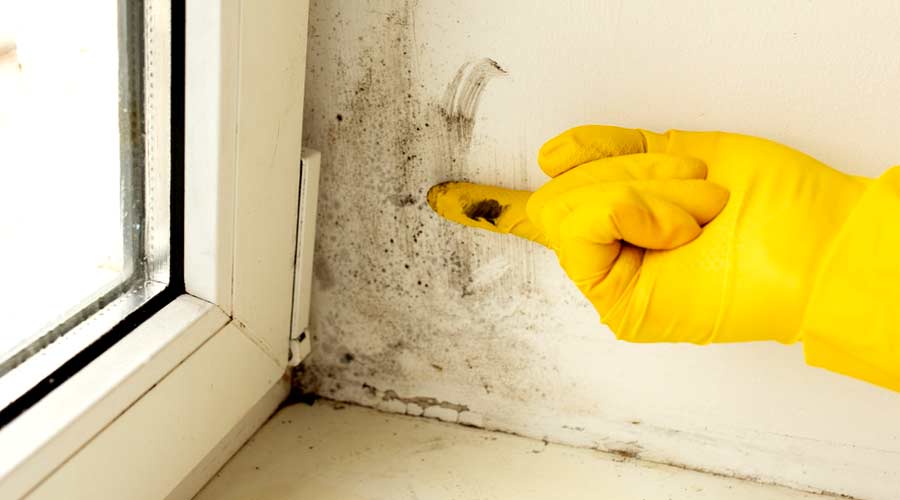
Mold is one of those sneaky evils that creeps in silently and spreads quickly. At least 45 million buildings in the United States have unhealthy levels of mold which can damage a building's structure while contaminating the air in the process. The trick is to know the enemy — where it hides and how it grows.
Here are a few things professionals responsible for facilities should know before tackling mold in a commercial building.
How does mold grow?
The leading cause of mold is moisture. Any damp area is prime real estate (pun intended) for mold growth. Mold starts as little spores that float around in the air and when they land on a moist surface, they form colonies and grow into what we know as mold. This process usually only takes 24-48 hours.
With all of this in mind, it is important to detect when mold is growing, where to look and how to help facilities prevent mold growth in the future.
What are the signs there might be mold present?
Ceiling and wall discoloration — If you notice a light yellow or brown color infiltrating the walls and slowly growing over time, this could signify water damage and mold growing there.
Musty smell — If you walk into a room where something smells stale and pungent, don't ignore it. There could be mold nearby.
Persistent cough — This sign is less common, but if mold has been growing over time without treatment, some people can develop persistent coughs. This could be a good question to ask before cleaning.
Where to look and what to suggest?
Bathrooms — This is one of the most common areas mold grows due to moisture. Mold generally shows up as grime or tiny black specks. Turn on a vent every so often to get air circulating into and out of the space.
Windows — Buildings are designed to keep rooms at a consistent temperature to avoid mold and mildew, but severe increases or decreases in outside temperature can cause condensation inside windows. If this happens repeatedly or for long periods of time, the moisture can build up and lead to mold inside the building. Keep a dehumidifier in areas prone to moisture buildup or an exhaust fan to increase ventilation throughout the building.
Under carpet and behind drywall — This may seem like some of the last places you would look for mold, but mold can secretly build up in these places due to a ceiling or floor leak, as well as high indoor humidity. Mold in these places can be hard to spot, so it's important to thoroughly inspect for any signs and symptoms listed above. In almost all cases, the carpet and/or drywall will need to be removed, but suggesting carpet pads or, again, a dehumidifier will work to prevent further issues.
Sometimes mold stemming from water damage can be the result of a bigger issue such as flooding, roof leaks or maintenance issues. This could be a case for backup.
For example, let’s say you are from Boulder and are helping remove mold from a home and realize there is foundational property damage due to a recent winter storm. Suggesting that a company that specializes in water damage restoration in Boulder to the owner could be the next best step. Sometimes the problem is going to be out of your wheelhouse and that is okay. Knowing when to consult an expert is important.
Lastly, always remember to wear a mask and gloves before entering a contaminated room. Knowing the basics about mold growth and where to look for it can not only give you more confidence as you enter a building to clean, but it shows your expertise as well.
Michael Griggs is the owner and founder of Restoration Logistics, providing water damage restoration services to the greater Denver metro area since 1986. With certifications and decades of experience in all major disaster restoration areas, Michael and his team are always available to restore your home or business and return your life to normal.

 The Down and Dirty on Cleaning in Virus Season
The Down and Dirty on Cleaning in Virus Season How Surfactant Use is Expanding in Commercial Cleaning
How Surfactant Use is Expanding in Commercial Cleaning